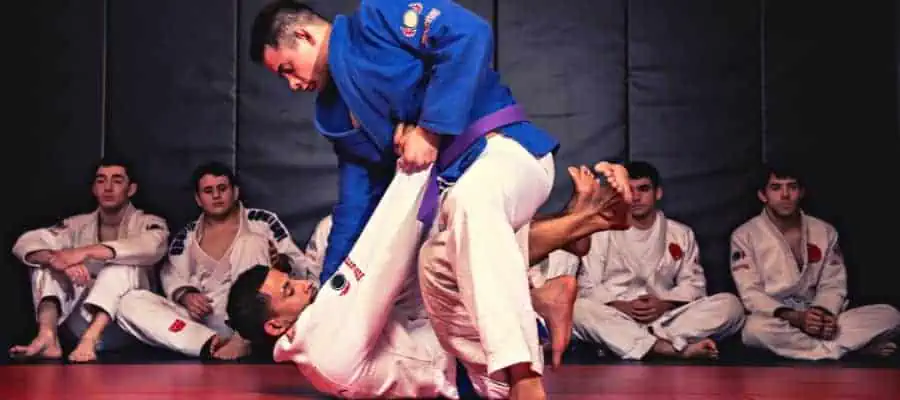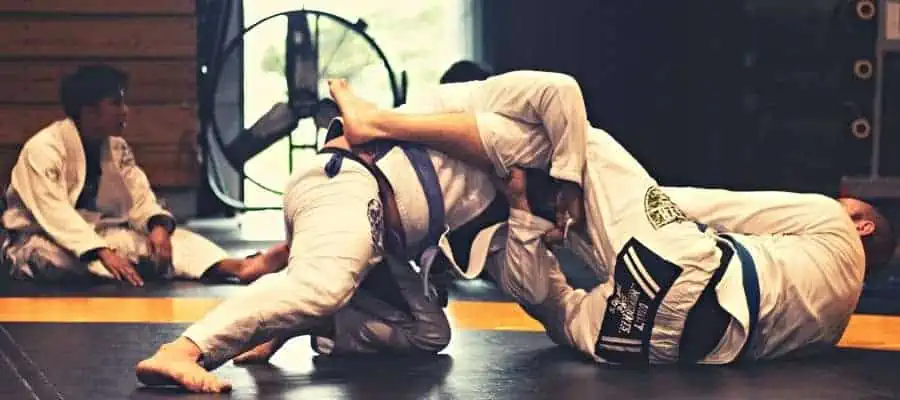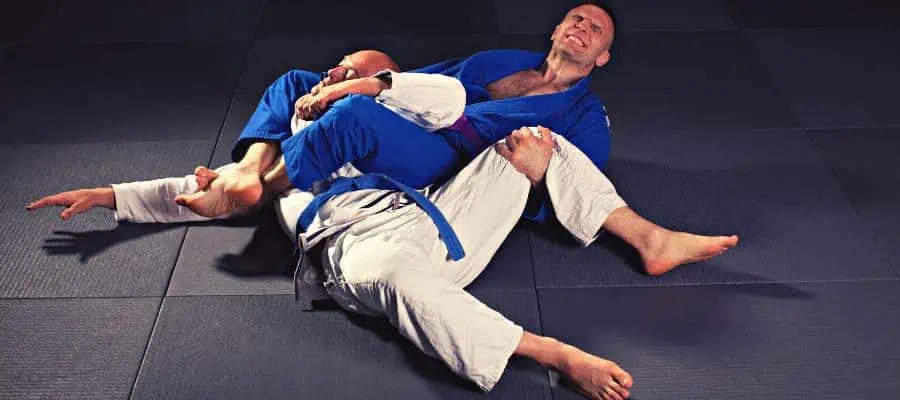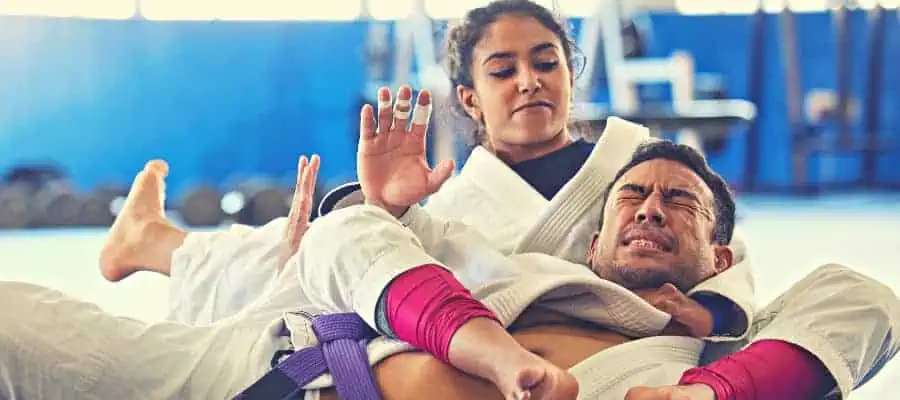Going to a Brazilian Jiu-Jitsu class can be a wonderful experience for your soul but a bit painful for your body. Even with a lot of care, injuries are inevitable on the mat. One of the most unpleasant and ordinary things that can happen to you during training is neck problems.
So, can you do BJJ with a bad neck? Many grappling grips and submissions are concentrated on the neck. Your ability to train depends on your decision and the severity of your injury. If you have minor injuries, you can continue training. But adapt your practice so you take all the pressure off your neck. If you have a serious injury, it is unsuitable to continue training.
Fortunately, a large percentage of injuries can be resolved in our time. Medical science is currently at a solid level regarding treating sports injuries. At one point, you will get hurt; make peace with it. No matter how hard you try. You can partially prevent them from appearing frequently.
Jiu-Jitsu Training And Neck Injuries

If you are a passionate practitioner of Brazilian Jiu-Jitsu, you know those minor neck problems can be tiring. Therefore, getting you off the mat in case of a serious neck injury will be difficult.
The neck is a complex set of muscles frequently used in grappling. Your neck is your strong but vulnerable point. Its health and strength are vital for sports as well as everyday life. It is the pillar of your head and the connection of it with the spine. The last thing you want is to suffer a major injury that will hamper your life functions. To know how to deal with it, it would be necessary to know:
- What are the causes, types, and symptoms of neck injuries
- If and how can you train with an injury
- How you can prevent neck injuries
Causes Of Neck Injuries In Jiu-Jitsu
Chokes and strangles comprise a large part of submission finishes, and trying to get out of them while your head is trapped can be problematic for your neck. Such as exits from a solid guillotine, rear naked chokes, d’arce chokes, and even triangle chokes. Therefore, they represent the greatest threat to a neck injury.
However, this kind of injury doesn’t need to come only from chokes; it can also come from grappler movements such as shoulder roll, berimbolo, or any roll in any direction. It can also happen if your partner puts pressure on you from above or pulls you by the collar of your GI.
Professionally speaking, when your neck is, e.g., in a deep guillotine, there is hyperflexion plus a forced neck rotation in an uncomfortable position. Hyperflexion occurs when a joint is flexed beyond its normal range of motion. It is not hidden that individuals try to force a tap out with a neck crank instead of a choke. Such hyperflexions and rotations can injure the spine. There are various neck injuries to be mentioned, and some of them are:
Sore Neck Or Stiff Neck
Although it may disrupt your daily activities, this case does not mean anything serious. A stiff neck results from a strained muscle or soft tissue during strenuous training movements. It is characterized by difficult neck movements, stiffness, shoulder pain, and sometimes even headaches.
Sprained Neck Or Strained Neck
Neck sprains and neck strains are different regarding which tissue they affect. A strain is stretching a muscle or a tendon, and a sprain is stretching a ligament. The cause of this can be an impact that may force the neck to quickly extend beyond its normal range and then snap back forcefully. Symptoms are dull pain, stiffness, pain in the back of the neck and shoulders, and pain that worsens with movement and makes movement difficult.
Cervical Disc Herniation
It is an injury common to the spine but also occurs in the neck, in which the central part of the intervertebral disc protrudes into the spinal canal. It appears due to trauma, resulting in pain in the area of the arms, shoulders, and neck.
If And How Can You Train With Neck Injuries
As said, with any injury like the neck, your training schedule can go in two completely different directions. It is up to you to decide, and your decision should depend on the severity of your physical health situation. If you care about your past and future progress in sports, you will make the right decision.
Minor Neck Injury
Training with neck pain in BJJ is normal for minor injuries. It is difficult but not impossible. You need to adjust your training to eliminate any strain and pressure on your neck. Start avoiding guard passes from your knees; practice standing guard passes.
It is advised not to start contact from your feet because the takedown could increase your injury even if you land well. Devote yourself to submissions involving the legs, drill from the bottom and standing position, and if you have to engage the body, ensure you stay on top. Be optimistic; now, you can focus and work on other segments of your game.
Serious Neck Injury
In case of serious problems, it’s simple. Be smart and responsible to yourself and stop training. See a medical professional as soon as possible. Dizziness, vision problems, and tingling in the hands are already more serious cases, as well as a minor injury that has not healed after more than 6 weeks. In the mildest case, you will need medicines to remove muscle tension and some time out of the gym to rest and regenerate.
Tips For Prevention Of Neck Injuries
There are many different ways to protect your health and prevent injuries. If you train for a long time and have no intention of stopping, you will try to find every way around something that could cost you your health. Don’t be a stubborn Jiu-Jitsu guy.
A strong neck means stronger control of the whiplash movement of your head. It also has other benefits, such as sending a better signal from the head to the body, better body posture, better breathing, and eliminating pain, stiffness, and tension.
Strengthening Your Neck
Strengthening your neck will help you both in grappling practice and everyday life. Add neck strengthening exercises to your daily routine. More specifically, it strengthens the posterior chain because your neck connects you to the rest of your body.
Good for strengthening exercises are lateral neck flexion, barbell trap smash, banded neck rotation, the neck plank, and dumbbell shrugs. Some of these exercises are done with equipment such as weights, dumbbells, and resistance bands.
Do not start with weights immediately; it would be best to strengthen yourself with a resistance band first. Throw in more reps and heavier weights as you progress. There is also a common grappler exercise you should avoid if you have a sensitive neck: the neck bridge.
Training Smarter
You must have heard a thousand times from more experienced people that you should warm up well and also stretch after training. Although many have heard that does not mean that they have started to practice. It is true that warming up before and stretching after training is very beneficial. If you have an injury and don’t want to aggravate it, skip some rolls.
Ego can be a huge enemy to injury prevention, especially with younger and hungrier guys eager to prove themselves. Agree with your partners for a lighter roll, less power, and more technique.
Can You Do Jiu-Jitsu With Bad Shoulders?

The shoulder is a fairly mobile and used joint used for grappling activities. Hence, its dislocation is a well-known injury. It is mostly caused by an unpleasant fall. The shoulder needs to be put back in the socket by a specialist. After such an injury, it would be wise to adapt your training to something less traumatic for the shoulder.
Of course, if you decide to continue the practice, it would be possible with more caution. Avoid sparring; it can raise your adrenaline, convincing you that the existing injury is good. Frequent dislocations, however, can lead to a more serious injury, such as a labral tear.
The necessary surgical procedure and time out of training are advised. Shoulder rehabilitation also includes visiting a physiatrist because special exercises are needed for healing. Which can take a while. While minor injuries take 1-2 weeks to repair.
Can You Do Jiu-Jitsu With A Bad Back?

Bad back in BJJ is also a common case from all the throwing, pulling, and pushing. Although BJJ can be very stressful for the lower back, it has been proven that 90% of people outside of BJJ suffer from bad backs.
This is another unpleasant pain that is an integral part of jiu-jitsu. As long as it is within small limits, stopping the training process will not be necessary. It occurs, for example, in situations such as spending a long time in the opponent’s guard.
For prevention, stretching in the morning and at night, stretching after training, and strengthening the abdominal muscles are recommended. It is not excluded that you go to seek professional help in case the pain lasts a long time and is intense so that the injury does not get complicated and worsen.
Can You Do Jiu-Jitsu With A Bad Knee?

Unlike other injuries, even mild knee pain is not something you should ignore. Suppose you have pain in the knee, and previously you did not have an injury. In that case, this may mean you have improper alignment, which is unhealthy and can eventually develop into an injury.
Many parts of the knee can be involved in the injury. Ligaments can be torn and injured to the knee cap due to dynamic movements on the knees and single, double-leg takedowns. Of course, strains and sprains are very common, but also more serious and complex injuries that can lead to surgical intervention.
That is why it is recommended to stop training for a while. Milder injuries heal after 6 weeks with the necessary care, while more severe injuries can take up to 4 months.
Do You Have To Be Flexible To Do Jiu-Jitsu?

Flexibility in Brazilian jiu-jitsu is unnecessary, but it helps and raises you to a higher level. BJJ training alone contributes to your flexibility, but if you want to have a slight advantage and speed up the process, certain stretching exercises are recommended.
Progress in flexibility comes after the first few months of training. Just rolling and drilling have the quality to increase your body’s elasticity. The benefits are an increase in performance, a reduction in the possibility of injury, better efficiency of muscle work, and keeping the body in an overall better condition.
Flexibility will help you both in training and everyday life and its activities. Tests say that people who are more flexible live longer.
Conclusion
We conclude that the severity of the neck injury is crucial for your training process. The neck is vital for your functions, and you should do everything to preserve it. Minor injuries with adapted training and increased attention are recommended. In contrast, you should see a doctor in case of major injuries. Injuries are not something to play with, and you need to be smart and responsible to avoid the worst scenario.
Every suggested prevention is recommended to be included in your daily schedule. Knowing what the injury is, its symptoms, and how it occurs is also helpful. Stretch, warm up, and develop the habit of seeing a professional; even when it comes to minor injuries, prevention is better than cure. The last thing you want to happen to you is to be unusable in activities outside and inside the gym. Train smart and safe.
Recent Posts
It can be hard to improve your Brazilian Jiu-Jitsu skills if you don't have access to a good BJJ gym or cannot go every day. However, there are still ways that you can improve your game from home....
In Brazilian Jiu-Jitsu gyms around the world, you can find many people against or for strength training. Some believe it helps increase performance, while others advocate it’s detrimental. Although...
